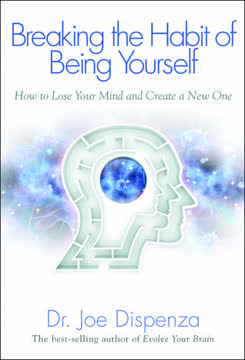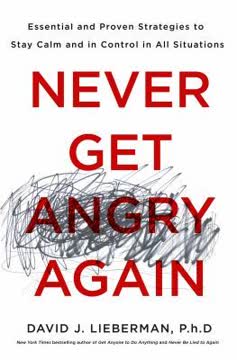Key Takeaways
1. Anger is a powerful energy to understand, not just suppress.
Anger is an energy!
Anger is natural. While anger has a bad reputation and can fuel hurtful behavior, it's fundamentally a normal human emotion. It's an energy, a vital aspect of being human, alerting us to unmet needs and helping us set boundaries. Suppressing anger isn't the goal; understanding and managing its energy is.
Retooling the energy. The key is to retool this energy, seeing it for what it truly is. Anger involves biological responses, psychological factors like right/wrong distinctions, and a continuum of experience beyond just rage. Deeply understanding these components allows for a comprehensive management plan.
Avoid destructive qualities. When unmanaged, anger has destructive qualities, often leading to loss of cognitive abilities when triggered. The aim is not to make anger disappear or stuff it down, but to manage it to avoid acting out consequences and instead utilize its power constructively.
2. Mindfulness is the key skill to manage anger by creating awareness.
In the simplest terms, mindfulness is a way of directing attention onto an experience and, in doing so, developing a nonjudgmental distance from it as separate from you.
Ancient, effective tool. Mindfulness, a practice developed nearly 2,600 years ago, is a core tool for investigating anger. It involves directing nonjudgmental attention to an experience, creating distance from it. This seemingly counterintuitive move, turning toward difficult emotions with kindness, can end suffering caused by being dominated by them.
Develop awareness. The central question is how to turn toward anger without being swept away. Mindfulness helps by building the skill of noticing your experience. This provides immediate symptom relief and builds a foundation for a long-term, unique anger management strategy.
Accessible and practical. Mindfulness is a skill that strengthens with practice, not an instant fix. It's time-tested, evidence-based, and extraordinarily accessible. All that's needed is intention, a human body, and a mind to work with.
3. Anger signals unmet needs and is linked to other core emotions.
Anger alerts us to unmet needs, which helps us set boundaries and make healthier connections with people.
More than just rage. Anger is one of eight core emotions, deeply related to others like fear, sadness, joy, surprise, trust, anticipation, and disgust. It doesn't happen in a vacuum but is triggered by unmet needs, insecurity, past hurts, trauma, present danger, and historical relationships.
Unmet needs are triggers. Analyzing situations through the lens of unmet needs is crucial. Whether it's a need for safety, respect, belonging, esteem, or self-actualization, anger often arises when these are perceived as threatened or denied. This highlights anger's functional role in advocating for survival and well-being.
Two sides of a coin. Anger manifests differently: acting out rage or repressing it, leading to anxiety, depression, or avoidance. Both extremes stem from a problematic relationship with anger, often maintained by avoiding mindfulness of the emotion. Understanding where you fall on this continuum is a starting point for change.
4. Your body's fight-or-flight response drives much of your anger.
When the amygdala fires in this way, blood flow to the neocortex slows down in order to place more attention and energy on fight or flight.
Biological response. Anger is fundamentally a biological response, rooted in the fight-or-flight system shared with animals. The amygdala triggers the release of stress hormones like cortisol and adrenaline, increasing heart rate, blood pressure, and breathing, preparing the body for action.
Cognitive shutdown. In high activation, blood flow to the neocortex (the rational brain) decreases or stops. This explains why people may not remember what happened during intense anger or act impulsively. The system is prioritizing immediate survival over reasoned thought.
Over-sensitization. Repeated difficulties can make the fight-or-flight system oversensitive, hijacking the brain even when the threat isn't life-threatening. This leads to disproportionate reactions like road rage or lashing out. Managing anger requires addressing this biological wiring.
5. You are not your anger; awareness allows detachment and choice.
In traditional mindfulness teachings, it is said that once you become mindful of the fact that you are in a state of anger, you are no longer inside the anger state but rather in a state of mindfulness of the anger state.
Awareness creates distance. When fused with anger, we believe it defines us. However, awareness allows us to see anger as a temporary experience separate from our core self. This detachment is the first step towards skillful response rather than mindless reaction.
Cultivating awareness. Awareness is a skill, not passive state, especially challenging in modern life's bombardment of stimuli. Coming back to awareness is critical for emotional health. The Anger Check-in scale helps build this habit, allowing earlier intervention.
Mindful of anger. Being mindful of anger involves understanding its physical and mental manifestations. By placing awareness on bodily sensations and thoughts associated with anger, we can work with them skillfully, preventing the cycle of one angry element locking into another.
6. Mindful practices like RAIN help process difficult emotions.
Here we allow this experience, whatever it is, to be exactly as it is in this moment.
RAIN as a framework. The RAIN practice (Recognize, Allow, Investigate, Nurture) is a powerful tool for processing difficult emotions like anger. It provides a structured way to engage with unpleasant experiences mindfully.
Steps of RAIN:
- Recognize: Label the sensation, emotion, or thought to create separation.
- Allow: Accept the experience as it is in this moment, without resistance.
- Investigate: Explore the experience with curiosity, deepening concentration and insight into its impermanence.
- Nurture: Offer self-compassion after engaging with the difficulty, stabilizing the nervous system.
Building frustration tolerance. RAIN increases frustration or distress tolerance – the ability to sit with unpleasant states without acting out. This allows us to understand the energy of emotions, feel them, and let them go, addressing suffering beyond the initial pain.
7. Your thoughts feed anger; identify and reframe cognitive distortions.
Awareness of our thinking helps us not exacerbate those biological responses with thoughts that only grow the anger.
Thoughts precede action. Our thoughts significantly influence our anger. Awareness of thinking helps us intervene before thoughts escalate biological responses. The goal isn't an empty mind, but an objective relationship with thoughts, observing them without fusion.
Cognitive distortions. Dysfunctional thought patterns, or cognitive distortions, fuel anger. Examples include:
- Filtering (only seeing negatives)
- Polarized thinking (all or nothing)
- Personalization (taking things personally)
- Blaming (others are responsible)
- "Shoulds" (rigid expectations)
Reframing thoughts. Mindfulness helps detach from unhelpful thoughts. Reframing involves looking at thoughts through a new prism, generating a more balanced perspective. This takes energy out of distortions, which rely on past/future thinking, and brings us back to the present.
8. Mindful communication and assertiveness are vital for healthy expression.
When you are assertive, you behave confidently and say what you want or believe in a direct way.
Beyond internal work. Mindfulness extends to relationships and communication. Internal speech can fuel anger, but external communication is where anger often impacts others. Approaching communication with kindness, curiosity, and goodwill is key.
Mindful listening. Listening without judgment or expectation is a crucial skill. Often, we're formulating our response instead of truly hearing the other person. Deep listening reduces misunderstanding, a major source of anger and conflict.
Assertiveness vs. Aggression. Assertiveness is the antidote to aggression. It's the wise mind working – rational and emotional minds collaborating to state needs directly and respectfully. Aggression, driven solely by emotional/body states, becomes unnecessary when assertiveness skills are developed.
9. Unprocessed past hurts and resentments fuel present anger.
So often when people are yelling or acting out their anger in some way, they are not yelling so much at the person in front of them as they are at a parent they are still angry with or a younger version of the person in front of them.
Historical roots. Current anger is often fueled by unprocessed past hurts and resentments. These old wounds can get stuck in the primitive parts of the brain or body, making present triggers feel like the past is happening again.
Resentments are stored anger. Resentments are long-standing bouts of anger, kept close until they become a permanent state. They are a major obstacle to peace. Addressing them mindfully, even starting small, is crucial for healing.
Forgiveness is a process. Forgiveness, for self and others, is embedded in healing anger. It's not a single event but a continuum, a willingness to consider letting go of the pain. Mindfulness helps by allowing us to see the common humanity in pain and choose a different path than repeating past patterns.
10. Anger is a daily reality; consistent practice is essential for management.
Since we know that anger will be with us each day, why not seek to make it so that we start at a lower number on the scale?
Anger is ever-present. Anger, in its various forms from irritation to rage, is a normal part of daily life. Since it won't disappear, consistent practice is needed to manage it skillfully. The goal is not elimination, but awareness and reduced intensity.
Lowering the baseline. A key long-term goal is to lower your resting anger rate – the baseline level you start the day with. This provides a cushion when triggers occur, making it less likely to escalate into dangerous territory.
Short-term vs. Long-term. Management involves both on-the-spot strategies (like the pause, checking the scale) and ongoing practices (like exercise, daily mindfulness) that teach the body and mind to settle, reducing overall stress and reactivity.
11. Find what works for you in managing anger across life domains.
Anger management is not cookie-cutter.
Personalized approach. Effective anger management is highly individual. What works for one person may not work for another. The journey involves exploring various tools and strategies and identifying which ones are most effective for your unique triggers, styles, and life circumstances.
Practice across domains. Anger manifests differently at home, work, and in intimate relationships, each presenting unique triggers and challenges. Applying mindfulness and communication skills consistently across all life domains is crucial for integrated healing.
Commitment to self. The process requires courage, motivation, and perseverance. It's about making a commitment to yourself to understand your anger history and coping styles with fresh eyes. Continuously assessing what works and adapting your practice is key to lifelong management.
Last updated:
Review Summary
Mindfulness for Anger Management receives mostly positive reviews, with readers praising its practical approach, clear explanations, and helpful exercises. Many find it accessible and appreciate the author's personal experiences. Some readers highlight specific techniques like "the pause" and breathing exercises. Critics mention editing issues and similarity to other anger management books. A few readers express concerns about Buddhist references. Overall, reviewers find the book valuable for understanding and managing anger through mindfulness techniques.
Similar Books










Download PDF
Download EPUB
.epub digital book format is ideal for reading ebooks on phones, tablets, and e-readers.




